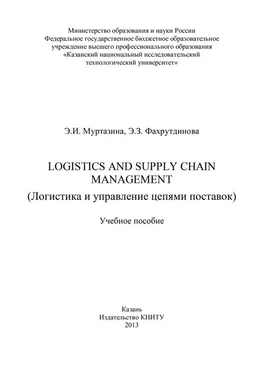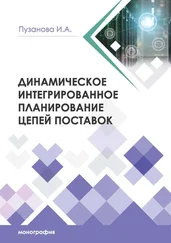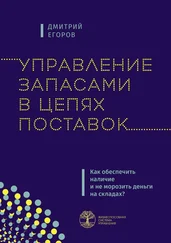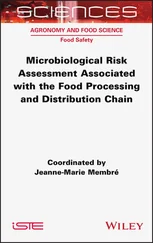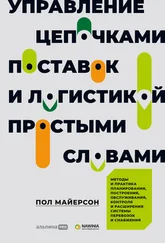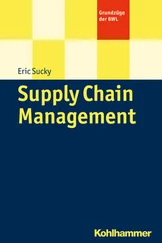C. EDI – Electronic Data Interchange:Intercompany, computerto-computer transmission of business information in a standard format. "Computer-to-computer" means direct transmission from the originating application program to the receiving, or processing, application program. An EDI transmission consists only of business data, not any accompanying verbiage or free-form messages.
D. LCL – Less-Than-Carload or Less-Than-Container Load:Shipment that is less than a complete rail car load (lot shipment).
E. RFID – Radio Frequency Identification:The use of radio frequency technology including RFID tags and tag readers to identify objects. Objects may include virtually anything physical, such as equipment, pallets of stock, or even individual units of product. RFID tags can be active or passive. Active tags contain a power source and emit a signal constantly. Passive tags receive power from the radio waves sent by the scanner / reader. The inherent advantages of RFID over bar code technology are: 1) the ability to be read over longer distances, 2) the limitation of requirement for “line of sight” reads, 3) added capacity to contain information, and 4) RFID tag data can be updated/changed.
F. GPS (Global Positioning System):A system which uses satellites to precisely locate an object on earth. Used by trucking companies to locate over-the-road equipment.
7 . Give English equivalents for the phrases given below:
глобальная система позиционирования; международная организация по стандартизации; мелкая отправка; радиочастотная идентификация; распределительный центр; электронный обмен данными.
8 . Translate the article:
Why the EU is worried about RFID
1. For a microchip that measures just a few millimeters across, RFID has already caused a fair degree of controversy. The radio tags – used on anything from pharmaceutical products to sea containers – have prompted campaigns by privacy groups, street demonstrations in continental Europe, and conspiracy theories a-plenty 6 6 зд. в изобилии
. The latest organization to step into the controversy is the European Commission, which this month held a series of workshops 7 7 зд. семинары
in Brussels as part of a consultation over the technology.
The EU expects the use of RFID tags to grow rapidly in the next few years, and believes a public discussion is necessary now about how they might be used, and how the data the tags provide might be protected. In part, the EU is responding to pressure from consumer and privacy groups, which have expressed concern that RFID tags could be used to build up huge databases of individuals’ shopping, leisure and travel habits. These databases could be exploited by unscrupulous businesses and also become a target for cybercriminals.
2. “Most business cases for RFID involve nothing that touches the consumer, but are based around back-end systems and the logistics chain. Most RFID tags will never reach the consumer but are on the pallet level,” says Jeroen Terstegge, corporate privacy officer at Philips and a moderator in the EU’s consultation.
3. European Commission officials are likely to be looking for evidence that the IT industry is taking such privacy and security considerations into account. And companies that are actively involved in RFID, including Philips, IBM and Accenture, are already working on privacy and security enhancement measures for RFID. Such measures could include limiting the range of tags – so that the reader would need to be in close proximity to the product, for example – encrypting the data on the tag, and providing consumers with the option to wipe the RFID chip once they have bought an item.
4. “We are seeing some push back on RFID plans, but it is because of technical not privacy issues,” says Duncan Brown, consulting director at analysts IDC. “We are seeing other areas where businesses are generating more and more information in a digital form, and some of this is potentially far more sinister data than what clothes you are buying”.
9 . Give English equivalents for the words and phrases given below:
база данных; беспринципный; быть в противоречии; возврат назад; вопросы технического характера; губительная информация; затрагивать потребителя; информация в цифровой форме; кибер-преступник; кодирование данных; меры по расширению; потребитель; провести ряд рабочих встреч; радиометка; система с внутренним интерфейсом; соображения секретности и безопасности; стирать чип радиочастотной идентификации; теории конспирации.
10 . Complete the sentences using abbreviations given below:

1. Computer-to-computer transmission of business information in a standard forma is called......... 1.
2. The use of radio frequency technology to identify objects is............ 2.
3. ........... 3is shipment that is less than a complete rail car load.
4. An organization within the United Nations which develops and monitors international standards has the name......... 4.
5. ........... 5is the warehouse facility which holds inventory from manufacturing pending distribution to the appropriate stores.
6. A system which uses satellites to precisely locate an object on earth is ......... 6.
11 . Answer the questions:
1. Why have radio tags prompted campaigns and street demonstrations by privacy groups in Europe?
2. Why is discussion on RFID tags necessary now according to the European Commission point of view?
3. What concern have consumer and privacy groups expressed on RFID tags?
4. What kind of privacy and security measures for RFID are Philips, IBM and Accenture working on?
5. Why is there a push back to RFID plans according to Duncan Brown, a consulting director at analysts IDC?
12 . Translate the sentences using the text “Why the EU is worried about RFID”:
1. Радиометки широко используются на фармацевтических продуктах и морских контейнерах.
2. Базами данных RFID-меток могут пользоваться беспринципные дельцы, они также могут стать мишенью для киберпреступников.
3. Потребители товаров выразили озабоченность по поводу того, что радиочастотные метки могут использоваться в целях построения таких баз данных, как покупки, времяпрепровождение и образ жизни индивида.
4. Компании, активно использующие радиочастотную идентификацию (Philips, IBM, Accenture), уже занимаются разработкой мер по усилению секретности и безопасности радиочастотной идентификации.
5. Мерами безопасности могут выступить кодирование данных метки; доступность для потребителей опции стирания чипа радиочастотной идентификации после покупки товара.
Читать дальше
Конец ознакомительного отрывка
Купить книгу
